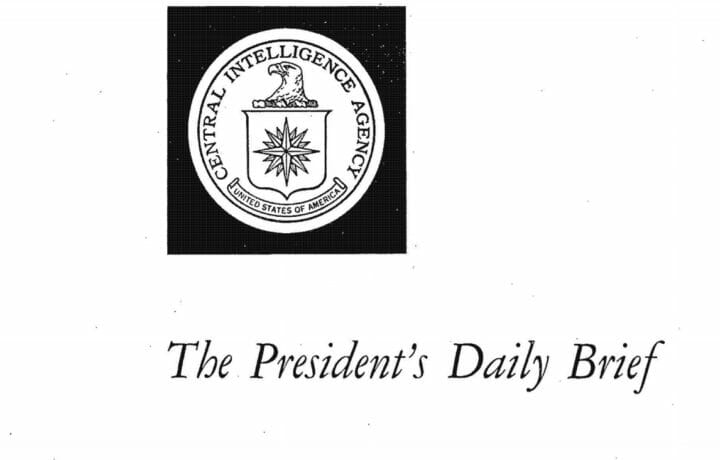Unvarnished reporting matters to every intelligence professional. So, too, does the manner of delivery. As the managing editor of the President’s Daily Brief (PDB), I confronted both questions every day for two years. I edited written analysis to maximize insight for the President and his national security team and determined much of the content of the PDB, and usually even the final text. On a good day, our intelligence raised the President’s understanding of a national security challenge or opportunity. On a bad day, we missed this vital opportunity.
Not infrequently, intelligence reporting would lead to analytic conclusions the President and his team would not deem to be good news. Perhaps a foreign policy initiative had floundered, or we discovered an important diplomatic agreement was not being honored in good faith. Maybe a pivotal ally proved less reliable than the White House expected. How does one craft such messages for the President of the United States?
Throughout my tenure as the PDB’s managing editor, I succeeded—and sometimes, failed—to effectively convey unwelcome news to the President and his senior staff. Here are best practices I learned about speaking truth to power:
Be prepared to show your work.
Accuracy is always critical, but when sharing hard truths with leaders, you had better be ready to provide every bit of supporting data. In these instances, the certainty threshold must be even higher than for uncontroversial assessments. One best practice is to take extra time, a day or two if possible, to lay out the relevant reporting, as well as the methods used, and determine the most logical sequence of presentation. At times you’re not only informing our country’s most senior leaders, you’re challenging their beliefs. Be prepared to make your case.
Do it face to face.
Nobody likes to hear bad news secondhand, especially presidential administrations. A private briefing offers the best possible venue. It gives executive policymakers an opportunity to respond skeptically (and, on occasion, forcefully), pose challenging questions, and engage in an honest dialogue. Discreetly. This allows the White House to determine the timing and agenda for subsequent policy discussions. On the flip side, unveiling unwelcomed analytic conclusions in public, such as in the annual unclassified worldwide threat testimony before Congress, would damage the policymaker-intelligence relationship. Intelligence leaders must approach such appearances with such care to avoid even the appearance of blindsiding the administration. The negative consequences would be far-reaching.
Be mindful of your surroundings.
Your message is not delivered, or heard, in a vacuum. To provide the best possible intelligence support to the White House, we must be unfailingly mindful of the President’s operating environment. Intelligence officers must understand the administration’s strategic aims, political constraints, and current sensitivities. Failing to understand and address these elements undermined the president’s receptivity to our reports on occasion. I learned that if you must touch a political or personal “third rail,” you must do so delicately and avoid lingering there or nothing else will be heard. One must craft and deliver the intelligence analysis–without altering its bottom line–to maximize receptiveness. Don’t lose sight of the objective: the goal of speaking truth to power is that they listen. You can’t accomplish that while stepping on a rake.
Identify opportunities.
If your news may close a door for an administration, offer possible ways to open a window. Unwelcomed intelligence can be more palatable when accompanied with ideas for basic remediation. Policy decisions will be made later, but helpful suggestions at such a time serve as a reminder to an unhappy policymaker that you are committed to their success, despite whatever setback you may have reported.
Earn trust and keep it.
I found that delivering bad news became less difficult the longer the administration was in office. Why? Trust makes a difference, and building it takes time. Neither a sustained track record of accuracy nor a personal rapport can be achieved overnight. (Hopefully, the two grow hand-in-hand.) A strong relationship between the briefer and policymaker can help cushion the blow when delivering unwelcome news—for you and for them.
These practices could apply to delivering bad news in any type of government or private-sector hierarchy. For the intelligence community, the stakes—our national security—could not be higher. The work could not be more rewarding, or daunting. But I knew if we—the analysts, editors, and briefers who supported the PDB—stayed true to these five tenets, we had done everything we could to help the President and his advisors make informed national security decisions.
Dennis Bowden is a fellow for all-source intelligence at LMI. He is a former executive intelligence officer at the Central Intelligence Agency, where he served as director of policy support, a unit that provided analytical services including the planning, review and dissemination of the President’s Daily Brief.




